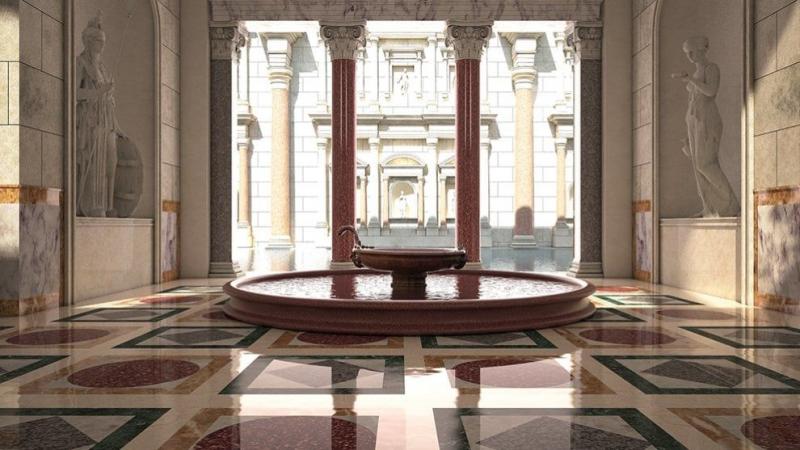Visitors to the monumental Baths of Caracalla in Rome can now see them as they appeared when they were inaugurated in the third century AD, at the time the largest baths of the Roman empire, thanks to new virtual reality goggles.
The special 3D visors recreate the atriums and chambers, swimming pools and gymnasiums, with their original opulent decorations, and enable those who wear them to get a 360 degree view of the spaces where Romans bathed, read, exercised, socialized and took care of their bodies.
“This is the first archaeological site in Italy, and possibly the world, to be brought alive with this kind of virtual reality technology,” said Giovanna Barni, the head of Coop Culture, the company that developed the software and goggles. “We hope it enriches people’s visits.”
The digital recreation is based on 30 years of research and on original sculptures, objects and works of art that used to decorate the baths, but are no longer in situ. Following the invasion of the Visigoths, who severed the city's water supply in the sixth century AD, the Baths of Caracalla were abandoned. In the Middle Ages, the baths were used as a quarry for construction materials, while the finest decorative pieces were ransacked by popes to be placed in churches and palaces.
Visitors will be able to see sculptures like Hercules and the Farnese Bull, which are now housed in the Archeological Museum of Naples. They can marvel at the magnificent decorations and fine details brought to life by the virtual technology, which even allows to see the water flowing.
The itinerary is organized into 10 sections, of which six are enhanced by the new technology, with the chance to compare the baths, then and now. The virtual images are accompanied by an audio commentary.
Entrance fee is 8 euros, plus 7 euros for the virtual video guide. Advance booking is recommended at a cost of 2 euros via the Coop Culture website.













